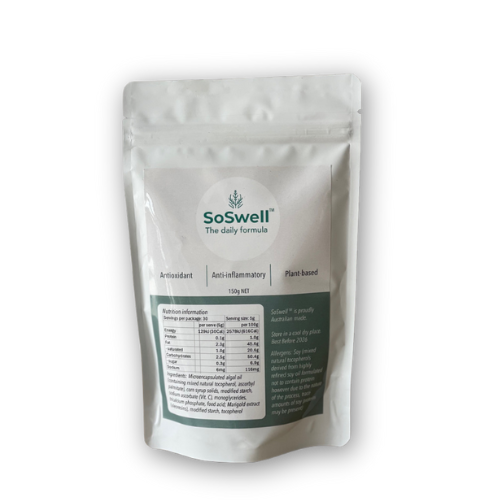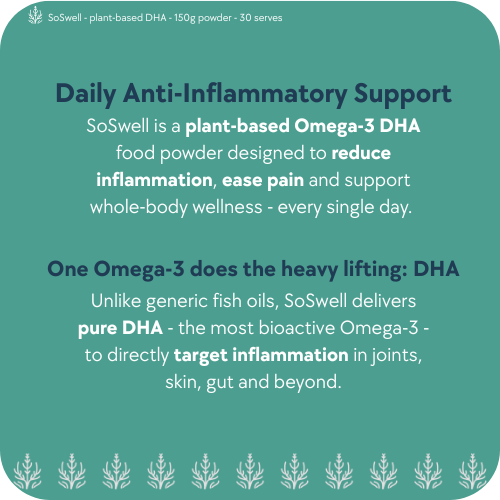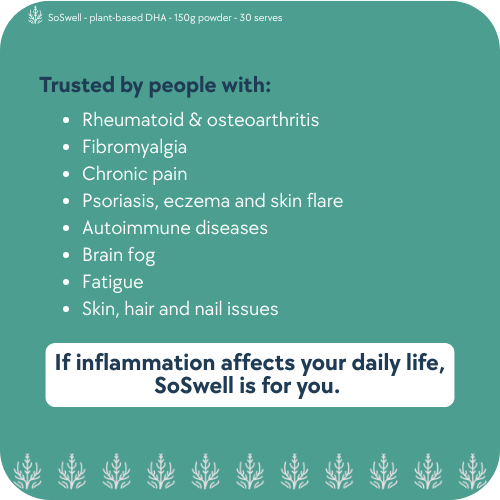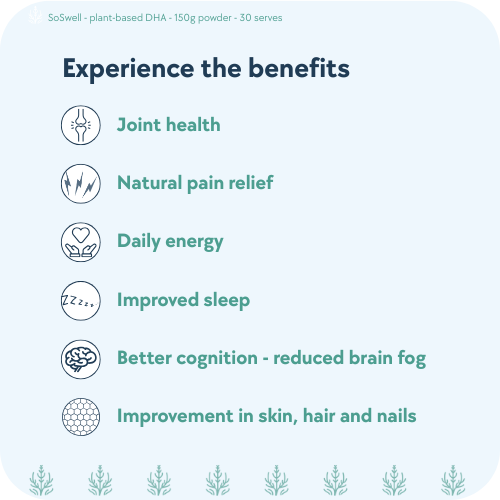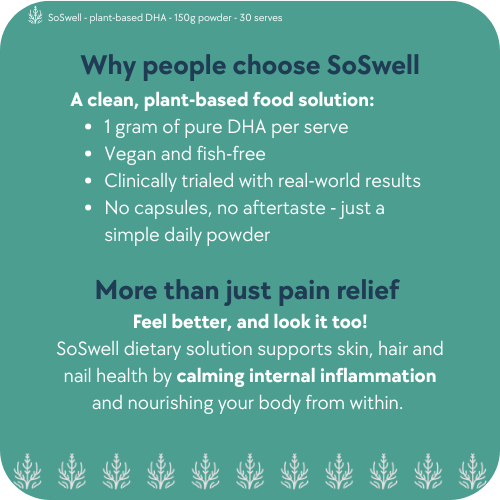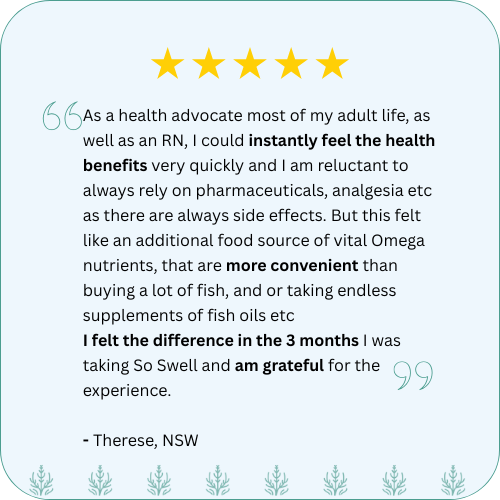
Balancing Your omega-6 to omega-3 Ratio: What You Need to Know
Share
We're Getting Too Much omega-6 and Not Enough omega-3
Omega fatty acids are essential - but the balance between them is what really matters.
Most people today consume far too many omega-6 fatty acids and far too few omega-3s, especially DHA. This imbalance is a major driver of chronic inflammation, which plays a role in many common health issues: arthritis, autoimmune flares, heart disease, mood disorders and more.
What Are omega-6 and omega-3 Fatty Acids?
Omega-6 and omega-3 fats are both essential - your body can't make them, so you need to get them from your diet. But they work very differently in the body:
Omega-6s (like linoleic acid and arachidonic acid) are involved in inflammation, immune activation and clotting. You'll find them in:
- Seed oils like sunflower, soybean, safflower, corn and cottonseed oil
- Margarine and processed spreads
- Chips, crackers, baked goods and processed snacks
- Restaurant and takeaway foods (fried in seed oils)
Omega-3s (like DHA, EPA and ALA) help counterbalance inflammation and support your brain, heart, joints and immune system. You'll find them in:
- Fatty fish (like salmon, sardines, mackerel)
- Algae (the original source of DHA)
- Flaxseeds, chia seeds and walnuts (ALA - requires conversion to DHA)
We need both - but not in the relative amounts we're getting today.
How the Modern Diet Skews the Ratio
Our ancestors' diets had an omega-6 to omega-3 ratio of 1:1 to 4:1.
Today, most Western diets sit somewhere around 15:1 to 20:1, or even higher. That means the average person is getting 15 to 20 times more omega-6 than omega-3 - creating a chronic pro-inflammatory environment in the body.
The main culprits?
- Ultra-processed food with seed oils high in omega-6
- Frequent takeout or fried foods
- Snacking habits (chips, crackers, muesli bars)
- Even so-called "healthy" products like protein bars, salad dressings and granola often rely on high-omega-6 oils
Unless you're actively increasing omega-3 intake - and especially DHA - it's nearly impossible to restore this balance, or even come close.
Why You Can't Just Cut omega-6 - You Have to Add DHA
Reducing omega-6s (like cutting seed oils) is a good start, but it's not enough.
To shift your omega-6 to omega-3 ratio back towards balance, not only should you cut omega-6s, you need to increase your intake of high-quality omega-3s, especially DHA.
DHA:
- Is the most bioavailable and long-lasting omega-3 fatty acid
- Is much more effective than ALA (from flax or chia) at reducing inflammation
- Helps regulate and control immune and nervous system function
- Needs to be consumed at 1 gram or more per day to make a therapeutic difference
SoSwell: Targeted DHA to Restore Your Ratio
SoSwell is designed to help restore balance. It provides:
- 1 gram of algae-derived DHA per serve (1 scoop) - clean, concentrated and sustainable
- No hidden omega-6 oils or pro-inflammatory fillers
- Zeaxanthin to support antioxidant protection and skin health
It's a daily formula that helps bring your omega-6 to omega-3 ratio back to where your body functions best.
Final Thought: Health Starts With Balance
You don't need to cut out entire food groups. You just need to restore the ratio.
Try SoSwell today and rebalance your omega-6 to omega-3 levels - naturally and effectively.
Further Reading and Resources
Importance of a balanced omega-6 to omega-3 ratio
"The Importance of Maintaining a Low Omega-6/Omega-3 Ratio for Reducing the Risk of Autoimmune Diseases, Asthma, and Allergies." Missouri Medicine.

